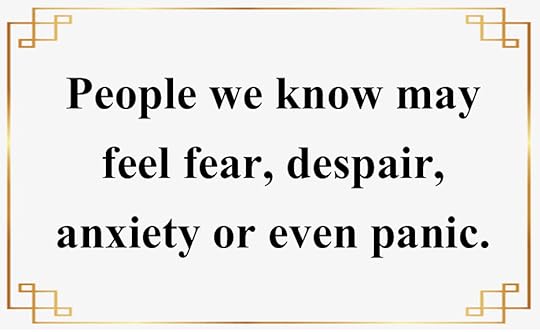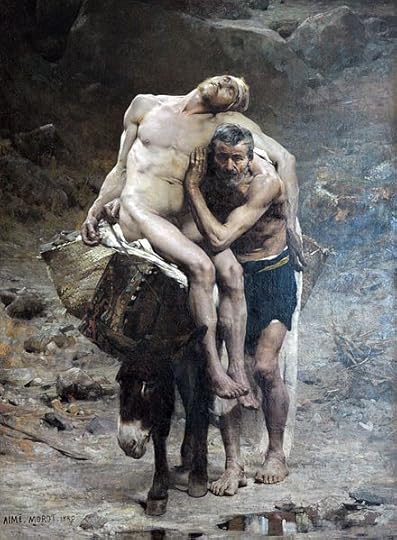HOPE IN THE FACE OF COVID-19

The coronavirus outbreak is scary but it need not be hopeless
4 min. read
Pandemic is terrifying. It casts a pall over our lives. Doubters and believers alike experience anxiety. We do not know what to do.
We are not alone. Others before us have faced these fears and survived.
Plague lingered for three hundred years in Europe. Daily life in the 14th to 17th centuries was coupled with daily death. Whatever normalcy meant prior to the plague was changed forever. Travel restrictions were in place. People avoided the market unless absolutely necessary. Schools were closed, shops abandoned, theaters emptied. Churches shut their doors.
Disease claimed the poor, the rich, Christian, Muslim, Jew, Buddhist, atheist, men, women, old, young. Yet in the midst of death many people did not give up. Responses to the pandemic were as unique as its victims.

Others chose to self-isolate. Dr. Burnett shut his door on June 11 1665, after learning that his servant William had contracted the plague. “He hath, I hear, gained great goodwill among his neighbors,” wrote Samuel Pepys of London, “for he discovered it himself first, and caused himself to be shut up of his own accord; which was very handsome.” Consider the sacrifice and compassion of Dr. Burnett’s act. He ensured that his servant had a physician’s care while simultaneously protecting their neighbors from disease.
In the face of plague, one village made the ultimate sacrifice to save its neighbors. The remote parish of Eyam contracted the pandemic in autumn of 1665, possibly from a shipment of London goods. The disease seemed to die out only to return the following spring. Local Church of England rector William Mompesson prevailed upon retired Puritan minister Thomas Stanley to help him protect neighboring villages from plague. The people of Eyam rallied to the cause. The parish was cordoned off.
Surrounding villagers responded to this act of heroism. Each week they left food and supplies near boundary stones just outside the parish. Over the course of fourteen months the epidemic took the lives of 273 people in Eyam. Fewer than a hundred survived. Yet due to their self-isolation, nearby parishes were barely touched by plague that year.

Historian Ibn al-Wardi of Aleppo, who died of plague in 1349, left a detailed report of community responses to pandemic. He observed that pestilence awakens us from indifference to our fellow human beings, adding
One man begs another to take care of his children, and one says good-bye to hisMany people managed to carry on. William Shakespeare wrote the Sonnets and King John during an outbreak in 1593-96, during which time he lost his only son, Hamnet. When an epidemic in 1605 left the playwright self-isolated, he penned his masterpiece on despair, King Lear. Pandemic also closed Cambridge in 1665-66. Twenty-three-year-old Isaac Newton used the months away from university to make radical discoveries in gravity, optics, motion and calculus. Today 1666 is known as Newton’s Year of Wonders. Over time churches, communities and families found ways to live with their anxiety and the threat of infection. They refused to let despair rule their lives.
neighbors.
One is reconciled with his enemies, and another treats his friends with kindness.
One is very generous; another makes friends with those who have betrayed him.
One man changes his character while another mends his ways.
For this plague has captured all people.
There is no protection today from it other than His mercy, praise be to God.
Fear offers no hope and no solutions. Scripture assures us that we need not to be afraid, that God is with us. Yet in our anxiety we recall that God being with us may not be quite the same as God protecting us. We need look no further than a leprosarium or a cancer ward to confirm that the faithful also face challenges. We may ask why, as Job did sixteen times. Or as Tevye quipped in the film Fiddler on the Roof: “We are your chosen people. But, once in a while, can’t you choose someone else?”

Many of us have heard the truism that God did not promise that our lives would be without pain; God promised that we would never be without him. This is a daily litany for me. My daughter, Jessica, died of an overdose in 2015. I do not ask God to deliver me of this hurt; only that he never leave me, that he give me the strength to make it through another day. I can endure being afraid or grief-stricken. But I doubt I could survive without an assurance that we are not alone. What would a prayer sound like that spoke honestly to our fears? The ailing psalmist gave us one example:
Adonai, all my longing is known to you;Pandemic is terrifying but it need not be hopeless.
my sighing is not hidden from you.
Don’t abandon me, Adonai!
My God, don’t be far from me!
© 2020 David Bannon
Published on March 23, 2020 08:26
No comments have been added yet.



